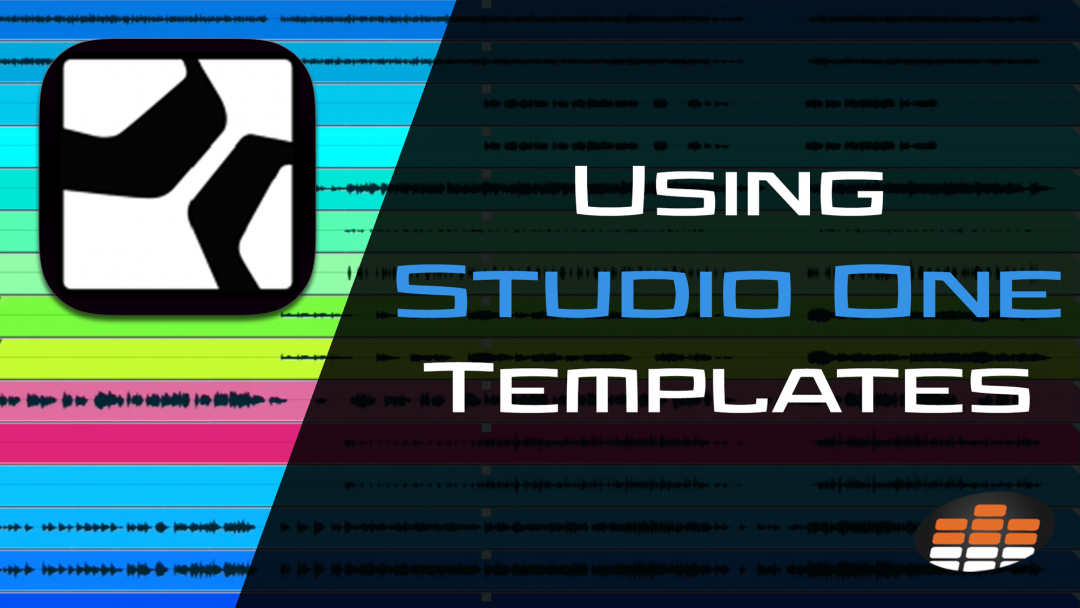Using templates in Studio One can be a massive time-saver, allowing you to open pre-made sessions you’ve designed for various purposes. Many engineers rely on custom templates to to help them work more efficiently. You may think the “one size fits all” approach to music production is counterintuitive to what’s largely a creative process, but some features just make our lives easier!
Does Studio One Allow You to Create Templates?
Yes it does! Studio One also comes preloaded with its own that you can choose whenever you open a new project. As of version 6, PreSonus completely revamped this function to include Smart Templates for a variety of tasks, such as making beats, recording audio, mixing, mastering, and playing virtual instruments.
- RELATED: How to Fade Out a Song in Studio One
- RELATED: Setting Up and Using Sidechain Compression in Studio One
Smart Templates also include tutorials and explanations for brand new users to get acquainted with the Studio One workflow. This is a convenient way to get familiar with the layout before you create your own custom templates, assuming Studio One is a new environment for you.
Why Using a Template Will Make Your Life Easier
Templates aim to include ready-to-go tracks with effect inserts primed and accessible, bus routing, virtual instrument tracks, and whatever else you’d need to speed up your process. Some engineers like to have a dedicated template for different purposes, like a recording template, one for mixing, one for production, etc. It’s also nice to have something of an all-around template, so you can dive in and record/mix in a single session with all of your favorite tools and effects right at your fingertips.
Templates are basically there to keep you locked in creatively, as opposed to spending a significant amount of time setting up a session every time you go to make music.
Download our most popular resource: 6 Steps for Creating Radio Ready songs to learn the fundamentals of what goes into a professional mix from renowned Producer, Songwriter & Mixer Warren Huart, who has worked on several Grammy-nominated albums!
Basic Tips for Creating & Using Studio One Templates
How to Create a Template in Studio One
Creating a template starts first with opening a blank session. This is the initial design phase, so to speak, where you’ll need to manually create the tracks you want, the routing, the inserts, effects buses, and anything else you want in your template.
For example, I find myself overdubbing vocals frequently. So, I have a template with several duplicable vocal tracks with inserts routed to a vocal bus. I have my effects returns (reverbs, delays, some parallel effects) all ready to go with sends on my tracks. These all route to a mix bus and finally to a bounce track where I can print mixes. The idea is that this template lets me not only record vocals, but get a rough mix going immediately.
Once you’re satisfied with your template in Studio One, you can pull down the File menu and select “Save As Template.” Whenever you launch Studio One and are greeted by the session creation dialogue box, you can click over to the User tab just to the right of Templates where your custom layouts are stored.
What Are Smart Templates?

Smart Templates are new to version 6 of Studio One. These include a set of built-in templates for essential tasks, such as recording, playing virtual instruments, making beats, importing and mixing audio multitracks, and more. Smart Templates also come embedded with hints and tutorials for a crash course in everything Studio One has to offer.
How to Load Templates in a Project?
Studio One gives you the option to load a template each time you launch the software from scratch as opposed to opening a session file directly. As we described earlier, any custom template you make gets saved to the User tab in the session creation dialogue box, from which you can select and open a new project from a template.
Using Templates in Studio One Helps You Standardize Your Process to Save Time
Standardizing your workflow is one of the many ways engineers and producers are able to work quickly and spend more time on creative tasks as opposed to technical ones. Templates are one of the keys to that, so it’s a good idea to be thoughtful and take some time to create a comprehensive template that gives you all the tools you need.
Looking For More Template Mixing Tutorials?
Want to learn more about how mixing with templates can make your sessions easy & efficient? Check out our best-selling Template Mixing With Billy Decker course today to learn you everything you need to know to get started!





